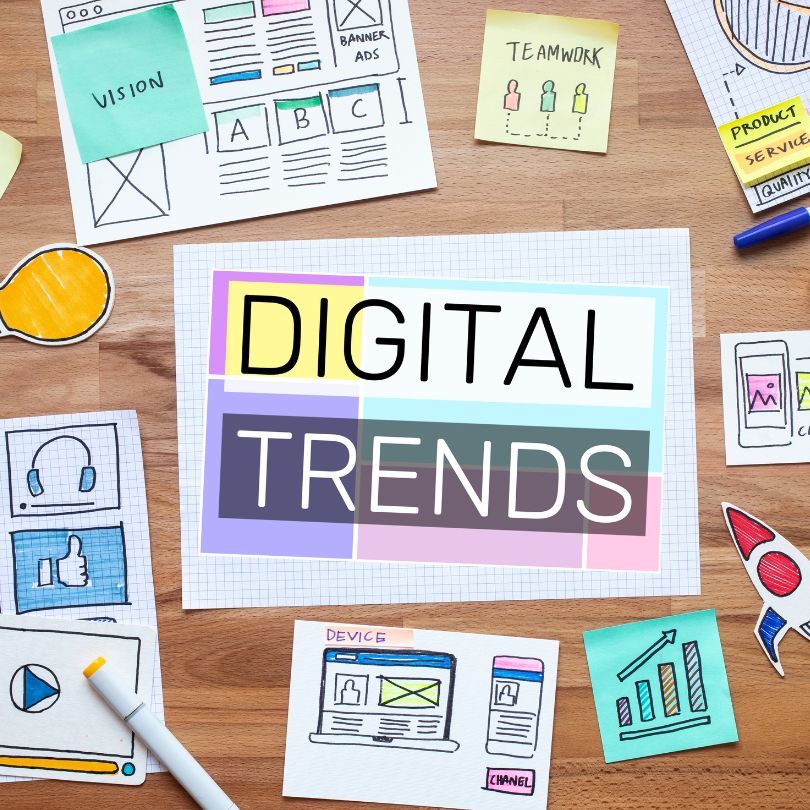
The Ultimate Guide to the Best Dropshipping Marketplaces in 2025

The world of online retail has seen a significant change with the emergence of dropshipping marketplaces. This groundbreaking retail approach allows business owners to sell products without having to keep physical stock – instead, when a customer makes a purchase, the item is shipped straight from the supplier to the customer’s address.
The global dropshipping market is expected to grow rapidly, with forecasts suggesting it will reach $332.27 billion by 2025. This indicates a 21.7% annual growth rate from $272.97 billion in 2024, showing that more and more e-commerce businesses are embracing this model.
Dropshipping has transformed traditional retail by:
- Removing costs associated with managing inventory
- Lowering the amount of money needed to start a business
- Allowing for quick expansion of operations
- Giving access to customers all over the world
- Providing flexibility in choosing products to sell
As you navigate the ever-changing world of online shopping, it’s important to choose the right dropshipping marketplace for your business success. This detailed guide looks at the best dropshipping marketplaces worldwide in 2025, including well-known platforms like Amazon and eBay as well as newer sites targeting specific markets.
We’ll explore each platform’s unique features, pricing structures, target audiences, and necessary tools to assist you in making an informed choice for your dropshipping venture. Whether you’re an experienced business owner or just getting started, you’ll find valuable information here to help you succeed in this fast-paced industry.
It’s also important to consider other options apart from the popular platforms. For instance, network marketing dropshipping, which combines two powerful e-commerce strategies into one dynamic business model, could be a profitable alternative. Furthermore, looking into other good marketplaces could create new possibilities for your dropshipping enterprise.
Understanding Dropshipping
Dropshipping is a simplified retail model that allows you to run an online store without having to keep physical inventory. Instead, when customers place orders, you directly send those orders to third-party suppliers who take care of storing, packaging, and shipping the products to the end customers.
How Dropshipping Works
The process involves four main steps:
- You list products on your chosen marketplace or website
- Customers purchase items at your set retail price
- You place orders with suppliers at wholesale prices
- Suppliers ship products directly to your customers
Advantages of Dropshipping
This business model offers several advantages for retailers:
- Minimal Initial Investment
- No inventory purchase required
- Reduced warehouse costs
- Lower operational expenses
- Flexible Operations
- Run your business from anywhere
- Scale up or down easily
- Test new products without risk
- Wide Product Selection
- Access to multiple supplier catalogs
- Easy product line expansion
- Quick adaptation to market trends
The dropshipping model eliminates traditional retail constraints through efficient inventory management. You can focus on marketing and customer service while third-party suppliers handle logistics. This setup creates opportunities for entrepreneurs to enter competitive markets with reduced financial barriers and operational complexities.
Key Drivers of Dropshipping Market Growth
The dropshipping market’s explosive growth is fueled by several powerful market forces.
E-commerce Expansion
E-commerce expansion has created unprecedented opportunities for entrepreneurs to reach global audiences without geographical limitations. The digital marketplace now connects sellers with billions of potential customers worldwide.
Globalization
Globalization has transformed the retail landscape by:
- Breaking down international trade barriers
- Enabling cross-border transactions
- Creating efficient global supply chains
- Facilitating partnerships between retailers and suppliers across continents
Advanced Technology
Advanced technology plays a crucial role in market acceleration through:
- AI-powered inventory management
- Automated order processing
- Real-time tracking systems
- Predictive analytics for demand forecasting
Evolving Consumer Behavior
Consumer behavior has evolved significantly, driving market growth through:
- Demand for instant gratification
- Preference for diverse product options
- Expectation of seamless shopping experiences
- Interest in international brands and products
The rise of mobile commerce has revolutionized shopping habits, with consumers expecting 24/7 access to products and services. This shift has pushed dropshipping businesses to adopt mobile-first strategies and optimize their operations for smartphone users.
Payment Technology Advancements
Payment technology advancements have simplified cross-border transactions, enabling:
- Multiple currency support
- International payment processing
- Secure transaction handling
- Digital wallet integration
These technological improvements have created a robust ecosystem where dropshipping businesses can thrive while meeting modern consumer demands for fast shipping and convenient shopping experiences.
Types of Products in Dropshipping
The dropshipping marketplace offers diverse product categories, each presenting unique opportunities for retailers. Here’s a breakdown of the most profitable product segments:
1. High-Demand Product Categories
These are the product categories that have consistently shown high demand and profitability in the dropshipping business:
- Fashion and Accessories: This includes athleisure wear, statement jewelry, and designer-inspired bags.
- Electronics: Smart home devices, mobile accessories, and wireless gadgets fall under this category.
- Home and Garden: Eco-friendly products, storage solutions, and home office equipment are popular in this segment.
2. Emerging Niche Markets
These are specific markets that are gaining popularity and can be highly profitable for dropshippers:
- Sustainable Products: Biodegradable packaging and zero-waste items are part of this trend.
- Health and Wellness: Natural supplements and fitness equipment are sought after by health-conscious consumers.
- Pet Supplies: Custom pet accessories and smart pet gadgets cater to pet owners looking for unique products.
Consumer demand patterns show a shift from mainstream products to specialized niche offerings. Data indicates that niche market products generate 30-40% higher profit margins compared to general merchandise. This trend reflects buyers’ growing preference for unique, specialized items that cater to specific interests or needs.
The success of product categories varies by platform. Fashion items dominate social media-based marketplaces, while electronics perform better on established platforms like Amazon and eBay. Retailers who align their product selection with platform-specific consumer behaviors see higher conversion rates and customer satisfaction levels.
Best Dropshipping Marketplaces in 2025
The dropshipping landscape in 2025 offers diverse platforms to suit different business models and target audiences. Here’s an in-depth look at the leading marketplaces:
Amazon
- Fee Structure: 10-17% referral fees
- Market Size: $690+ billion
- Key Features:
- Prime shipping integration
- Fulfillment by Amazon (FBA)
- Built-in customer trust
- Disadvantages:
- High competition
- Strict seller policies
- Complex fee structure
eBay
- Fee Structure: 5-15% final value fees
- Key Features:
- No monthly subscription required
- Auction-style listings
- Global reach
- Disadvantages:
- Price-sensitive buyers
- Limited brand control
- Variable shipping expectations
Etsy
- Fee Structure: $0.20 per listing + 6.5% transaction fee
- Key Features:
- Niche market for handmade items
- Strong vintage product presence
- Creative seller community
- Disadvantages:
- Limited to specific product categories
- Higher customer service expectations
- Strict handmade policies
Facebook Marketplace
- Fee Structure: No listing fees, 5% selling fee
- Key Features:
- High organic traffic potential
- Local market access
- Social media integration
- Disadvantages:
- Limited seller tools
- Informal buying environment
- Variable buyer commitment
Emerging Marketplaces
Not On The High Street
- Fee Structure: Application required, custom commission rates
- Key Features:
- Curated seller selection
- Premium positioning
- UK market focus
Allegro
- Fee Structure: Category-dependent fees
- Key Features:
- Eastern European market dominance
- Multi-language support
- Local payment integration
Each platform serves specific market segments and offers unique advantages for dropshippers. Amazon provides massive exposure but demands higher fees and stricter compliance
Comparison of Top Dropshipping Platforms
Let’s analyze how these platforms stack up against each other based on key criteria that matter to dropshippers:
1. Pricing Structure
- Amazon: Highest fees (10-17%) but largest customer base
- eBay: Mid-range fees (5-15%) with no subscription required
- Etsy: Most affordable ($0.20 per listing + 6.5% transaction fee)
- Facebook Marketplace: No listing fees, only payment processing fees
2. Target Audience Reach
- Amazon: Mass market, all demographics
- eBay: Bargain hunters, collectors
- Etsy: Craft enthusiasts, unique product seekers
- Facebook Marketplace: Local buyers, social shoppers
3. Platform Features
- Amazon:
- Advanced analytics
- Built-in fulfillment service
- Mobile optimization
- eBay:
- Global shipping program
- Seller protection
- Promotional tools
- Etsy:
- Shop customization
- Direct messaging system
- Pattern website builder
- Facebook Marketplace:
- Social integration
- Mobile-first design
- Direct customer communication
4. Seller Support
- Amazon: 24/7 support, extensive documentation
- eBay: Phone support, seller community
- Etsy: Email support, seller handbook
- Facebook: Limited support options
These platforms each offer unique advantages depending on your specific business needs, product type, and target market. Your choice should align with your budget, technical capabilities, and long-term business goals.
Automation and Software Solutions for Dropshippers
Automation tools transform dropshipping operations from time-consuming manual tasks into streamlined, efficient processes. Here’s a breakdown of essential software solutions for modern dropshippers:
Order Processing Software
- Shopify – Integrates with multiple suppliers, handles order routing, and provides inventory sync
- Oberlo – Specializes in AliExpress integration with automated pricing and inventory updates
- DSers – Enables bulk order processing and automated supplier communications
Inventory Management Tools
- Printful – Automates print-on-demand products with real-time stock monitoring
- Inventory Source – Syncs inventory across multiple sales channels
- ecomdash – Provides automated stock level updates and purchase order generation
Benefits of Automation Tools
- Reduced human error in order processing
- Real-time inventory tracking across platforms
- Automated price adjustments based on market conditions
- Instant order fulfillment notifications
- Streamlined supplier communication
Advanced Features
- AI-powered demand forecasting
- Automated customer service responses
- Multi-channel listing management
- Analytics and performance tracking
- Automated tax calculations
These tools integrate with popular dropshipping marketplaces to create seamless workflows. You’ll find pricing options ranging from basic free plans to premium subscriptions with advanced features. The right combination of automation tools can reduce operational costs by up to 30% and save 15-20 hours per week in manual task management.
Conclusion
The dropshipping marketplace landscape is set to transform dramatically by 2029, with projected market growth reaching $720.64 billion. Key developments expected to shape the industry include:
- AI-Powered Personalization: Marketplaces will leverage artificial intelligence to create hyper-personalized shopping experiences
- Sustainable Supply Chains: Growing emphasis on eco-friendly practices and transparent sourcing
- Enhanced Mobile Integration: Advanced mobile-first platforms with augmented reality features
- Local Market Focus: Rise of region-specific marketplaces catering to local consumer preferences
Selecting the right dropshipping marketplace depends on your specific business goals:
- Choose Amazon or eBay for broad market reach and established customer trust
- Consider Etsy for unique, handcrafted products
- Opt for niche marketplaces to target specific customer segments
- Select Facebook Marketplace for social commerce opportunities
The success of your dropshipping venture relies on matching your product offerings and business model with the marketplace that best serves your target audience and operational capabilities.